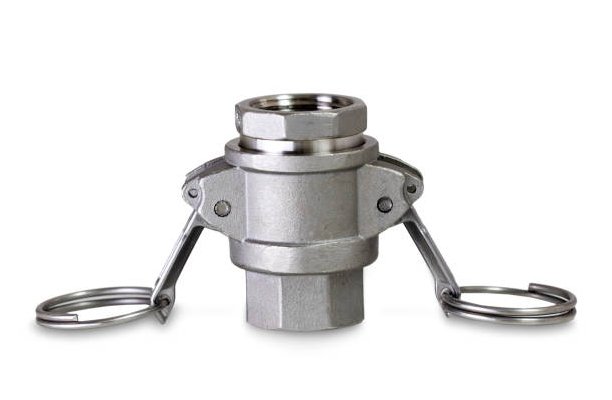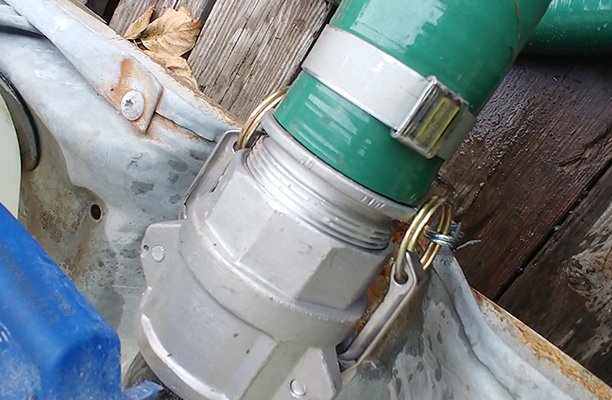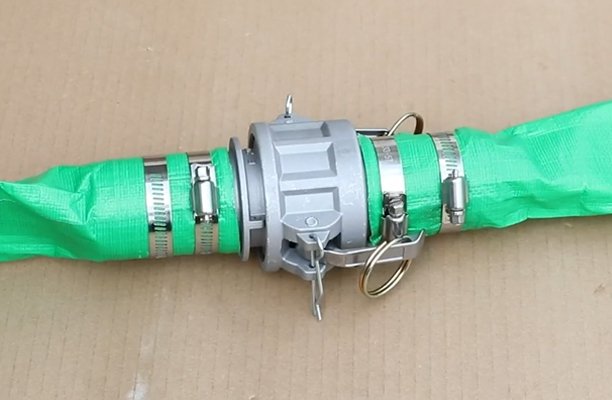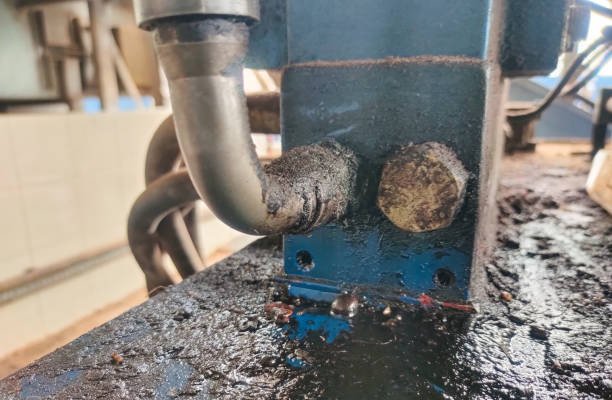What Is a Camlock Fitting?
Camlock fittings, also known as cam and groove couplings, are an essential tool in many industries. These fittings allow for quick, secure, and leak-proof connections between hoses or pipes. The beauty of camlock fittings lies in their simplicity—just insert one end into the other and use the cams (levers) to lock them in place. No tools? No problem. It’s as easy as snap-and-go!
Why Are They Important?
Camlock fittings save time and reduce the risk of leaks or spills. They’re a go-to option for industries dealing with liquids, powders, or gases, including agriculture, oil and gas, chemicals, and even food processing.

Benefits of Using Camlock Fittings
Why should you use camlock fittings? Let’s dive into the perks:
- Ease of Use: No tools required—just a quick locking mechanism that simplifies hose and pipe connections.
- Versatility: Suitable for transferring liquids, powders, and gases.
- Durability: Built to last with materials like stainless steel, aluminum, brass, and polypropylene.
- Safety: Provides a leak-proof seal, reducing waste and preventing hazardous spills.
- Cost-Effective: Long lifespan means fewer replacements and less downtime.
Types of Camlock Fittings
Camlock fittings are incredibly versatile, and their different types ensure they can adapt to various applications. Let’s dive deeper into the types and explore their specific uses and benefits.
Type A: Male Adapter with Female Thread
- Description: Type A camlock fittings have a male adapter on one end and a female threaded connection on the other.
- Uses: These fittings are mainly used for connecting hoses or pipes to female-threaded outlets like tanks, valves, or other equipment.
- Ideal for: Applications where a strong, secure threaded connection is needed. They’re especially useful in systems requiring tight seals for high-pressure or chemical transfer.
Common Applications:
- Fuel transfer
- Chemical processing
- Water handling systems
Type B: Female Coupler with Male Thread
- Description: Type B camlock fittings feature a female coupler that connects to male-threaded parts like valves or pipes.
- Uses: These fittings are generally used to attach hoses to male-threaded connections, making them ideal for use with pumps, tanks, and other industrial equipment.
- Ideal for: Industries that require high-pressure connections and when converting from male threads to hose connections.
Common Applications:
- Industrial pump systems
- Agricultural irrigation
- Fueling equipment
Type C: Female Coupler with Hose Tail
- Description: Type C fittings consist of a female coupler and a hose tail, designed for quick connection to hoses. The hose tail has a barbed end that ensures a secure, leak-proof connection.
- Uses: These fittings are perfect for low-pressure applications where flexibility and ease of use are essential.
- Ideal for: Connecting hoses to tanks, pumps, or valves where flexibility is needed, such as in agriculture or construction.
Common Applications:
- Irrigation systems
- General fluid transfer
- Wastewater management
Type D: Female Coupler with Female Thread
- Description: Type D fittings have a female coupler and a female-threaded connection, designed for coupling with male-threaded connections.
- Uses: These fittings are typically used in systems where both ends need to be female-threaded, allowing for flexibility in pipework and hose arrangements.
- Ideal for: Industrial environments where multiple hose connections are required without using adapters.
Common Applications:
- Manufacturing
- Marine fuel connections
- Chemical processing
Type E: Male Adapter with Hose Tail
- Description: Type E camlock fittings have a male adapter on one side and a hose tail on the other. This type is commonly used to connect hoses to male-threaded pipes or equipment.
- Uses: These fittings provide quick connection to hoses, especially for applications requiring a reliable seal and minimal downtime.
- Ideal for: Applications involving quick hose changes, such as in fluid handling or mobile equipment.
Common Applications:
- Transport trucks (fuel and liquid transfer)
- Irrigation systems
- Mobile tanks
Type F: Male Adapter with Male Thread
- Description: Type F camlock fittings feature a male adapter on both ends, one with a male thread and the other with a male hose tail. This design makes it easier to connect to female-threaded systems or other male-threaded fittings.
- Uses: These are ideal for connecting hoses to male-threaded pipes, offering robust and durable connections in high-pressure or industrial environments.
- Ideal for: Use in pump stations or systems where both male threads are needed for pipe-to-pipe or pipe-to-hose connections.
Common Applications:
- Fire-fighting systems
- Pump connections
- Tanker trucks
How to Choose the Right Camlock Fitting?

Selecting the perfect camlock fitting for your specific application might feel like searching for a needle in a haystack—but it doesn’t have to be! By considering a few key factors, you can easily pinpoint the ideal camlock fitting to get the job done safely and efficiently. Let’s break it down step by step so you can make the best choice.
1. Understand the Nature of Your Application
First and foremost, identify what you’re using the camlock fitting for. Different applications require different materials, sizes, and connection types. Ask yourself the following questions:
- What type of substance will pass through the connection (liquid, gas, powder)?
- Is the substance corrosive or abrasive (e.g., chemicals, oil, sand)?
- Will the system be under high pressure or high temperatures?
- Is the application permanent, or will you frequently disconnect and reconnect the hoses?
For example:
- In chemical processing, you’ll need a material that resists corrosion, such as stainless steel.
- For agriculture, lightweight and affordable polypropylene fittings may suffice for water or fertilizers.
2. Choose the Right Material for the Job
Not all materials are created equal, and each type of camlock fitting material offers unique advantages. Choosing the wrong material could lead to leaks, corrosion, or even damage to your equipment. Here’s a breakdown of the most common options:
Stainless Steel
- Best for: Chemicals, high-temperature systems, and food-grade applications.
- Pros: Highly durable, resistant to corrosion, can handle extreme conditions.
- Cons: Heavier and more expensive than other materials.
Aluminum
- Best for: Oil and gas transfer, irrigation, and medium-pressure systems.
- Pros: Lightweight, affordable, and resistant to mild corrosion.
- Cons: Less resistant to extreme conditions compared to stainless steel.
Brass
- Best for: Water and petroleum-based systems.
- Pros: Durable, corrosion-resistant, and versatile.
- Cons: Pricier than aluminum and heavier.
Polypropylene
- Best for: Lightweight and less demanding applications, such as agriculture or water systems.
- Pros: Affordable, lightweight, and corrosion-resistant.
- Cons: Limited durability in high-pressure or high-temperature applications.
3. Check the Fitting Size
Camlock fittings come in various sizes, typically ranging from ½ inch to 6 inches, but larger sizes are also available for specialized needs. Choosing the correct size ensures proper flow and prevents issues like leaks, pressure loss, or inefficiency.
Tips for Sizing:
- Match the System: Always confirm that the size of the camlock fitting matches the hoses or pipes in your system.
- Consider Flow Rate: Larger fittings (e.g., 4-inch or 6-inch) are better for high-flow applications, while smaller sizes (e.g., 1-inch) work for precision or low-flow needs.
- Future-Proof Your System: If you anticipate expanding or upgrading your system, consider fittings that allow for versatility and easy integration.
4. Evaluate Pressure and Temperature Ratings
Not all camlock fittings are built to handle the same levels of pressure and temperature. It’s critical to choose a fitting that can withstand your system’s operating conditions.
Pressure Ratings:
- Camlock fittings are generally designed for medium-pressure applications, but the maximum pressure varies by material and size.
- Stainless steel fittings often handle higher pressures than polypropylene or aluminum.
- Always check the pressure rating for both the camlock fitting and the hose or pipe it’s connecting to.
Temperature Tolerance:
- Stainless steel: Can tolerate extreme heat and cold, making it ideal for applications involving hot liquids or gases.
- Polypropylene: Limited to lower temperature ranges (usually below 180°F), suitable for cold water or mild liquids.
- Aluminum and brass: Moderate temperature tolerance but should be used within the manufacturer’s specified range.
5. Select the Right Type of Camlock Fitting
Camlock fittings come in different types (A, B, C, D, E, F, etc.), each tailored for specific connections. Here’s a quick guide to help you choose the right type:
- Type A: Male adapter with female threads – for connecting male-threaded pipes or tanks.
- Type B: Female coupler with male threads – for connecting hoses to male-threaded pipes or tanks.
- Type C: Female coupler with hose tail – ideal for connecting hoses.
- Type D: Female coupler with female threads – connects to male-threaded connections.
- Type E: Male adapter with hose tail – for hose-to-hose connections.
- Type F: Male adapter with male threads – often used with tanks, pumps, or valves.
- Dust Caps and Plugs: Protect unused fittings from dirt, debris, and contamination.
6. Ensure Material Compatibility with the Substance Being Transferred
This step is vital, especially if you’re working with chemicals or food-grade products. Using an incompatible material could result in leaks, contamination, or even failure of the fitting.
- For corrosive chemicals, stainless steel or polypropylene is typically the best choice.
- For petroleum products, brass or aluminum works well.
- For food and beverages, stainless steel is the industry standard because it’s non-reactive and easy to clean.
7. Confirm Compliance with Industry Standards
Depending on your industry, you might need to follow specific regulations or standards for camlock fittings. For example:
- Food-grade applications require materials like stainless steel that meet FDA or other hygiene standards.
- Chemical handling often mandates fittings that meet ASME (American Society of Mechanical Engineers) or ISO (International Organization for Standardization) requirements.
- Marine and offshore industries require corrosion-resistant materials that comply with maritime safety standards.
8. Consider the Environment Where the Fitting Will Be Used
The environment plays a significant role in your choice of camlock fitting. Will the fittings be exposed to harsh weather, saltwater, or corrosive chemicals? If so:
- Stainless steel is your best bet for corrosion resistance in humid or marine environments.
- Polypropylene may degrade under UV light, so avoid using it for outdoor, sun-exposed applications.
- Brass and aluminum are great for moderate outdoor use but may need extra protection in extreme conditions.
9. Evaluate Ease of Maintenance and Replacement
Choose a camlock fitting that’s easy to clean, inspect, and replace. Here’s what to keep in mind:
- Look for removable gaskets for easy cleaning or replacement.
- Consider fittings that are interchangeable between brands for hassle-free replacements.
- Opt for dust caps and plugs if the fittings will be disconnected and exposed to dirt or debris frequently.
10. Think About Long-Term Cost Efficiency
While it might be tempting to go for the cheapest option, investing in high-quality camlock fittings can save you money in the long run. Consider:
- Durability: Stainless steel may cost more upfront but can outlast other materials.
- Repair Costs: Cheaper materials may require frequent repairs or replacements.
- Downtime: Poor-quality fittings can lead to leaks or failure, which may result in costly downtime.
11. Double-Check Compatibility with Your Existing System
Before finalizing your purchase, ensure that the camlock fittings are compatible with your existing hoses, pipes, or systems.
- Double-check thread sizes and connection types.
- Verify brand compatibility, especially if you’re mixing fittings from different manufacturers.
Conclusion
Camlock fittings might not be the flashiest component, but their impact on industrial efficiency is undeniable. With their quick-connect mechanism, durable construction, and versatility, these fittings are a reliable choice for countless industries. Whether you’re in agriculture, oil and gas, or food processing, camlock fittings are designed to make your job easier, safer, and more efficient.
So, the next time you’re looking for a reliable connection for your hoses or pipes, consider camlock fittings—they’re simple, durable, and effective.
FAQs
1. What are camlock fittings used for?
Camlock fittings are used to quickly connect hoses or pipes for transferring liquids, powders, or gases in industries like agriculture, oil and gas, and food processing.
2. Are camlock fittings interchangeable?
Yes, most camlock fittings are interchangeable between brands if they follow the same size and industry standards (MIL-C-27487 or EN 14420-7).
3. What materials are available for camlock fittings?
They’re made from stainless steel, aluminum, brass, and polypropylene. The choice depends on your application and the substance being transferred.
4. Can camlock fittings handle high pressure?
Camlock fittings are designed for medium-pressure applications. Stainless steel handles higher pressure, while polypropylene is best for low-pressure systems.
5. Are they food-grade?
Yes, stainless steel camlock fittings are safe for food and beverage applications, meeting FDA and hygiene standards.
6. How do you maintain camlock fittings?
Clean regularly, inspect for damage, replace worn gaskets, and store in a dry area to ensure long-term performance.





